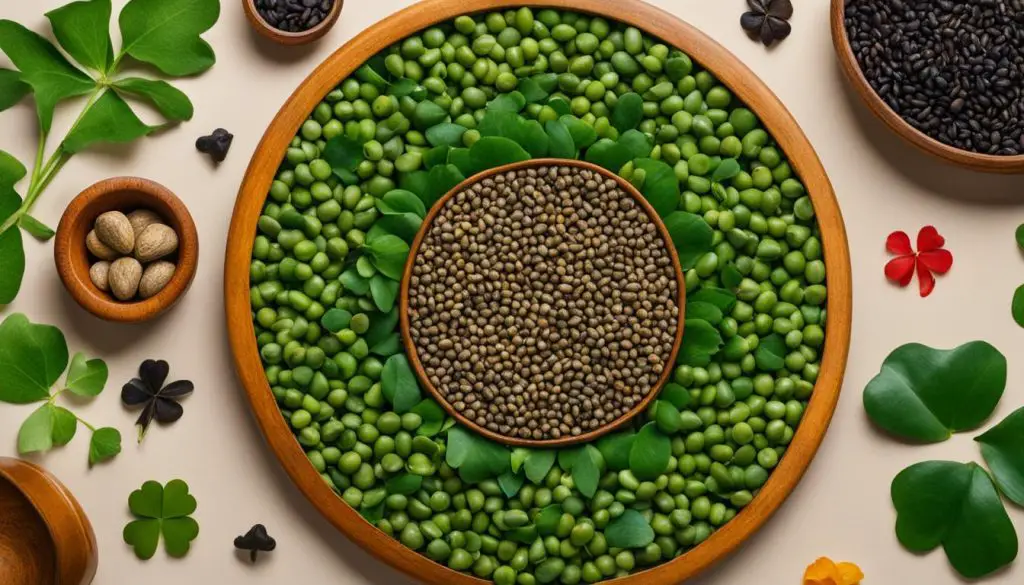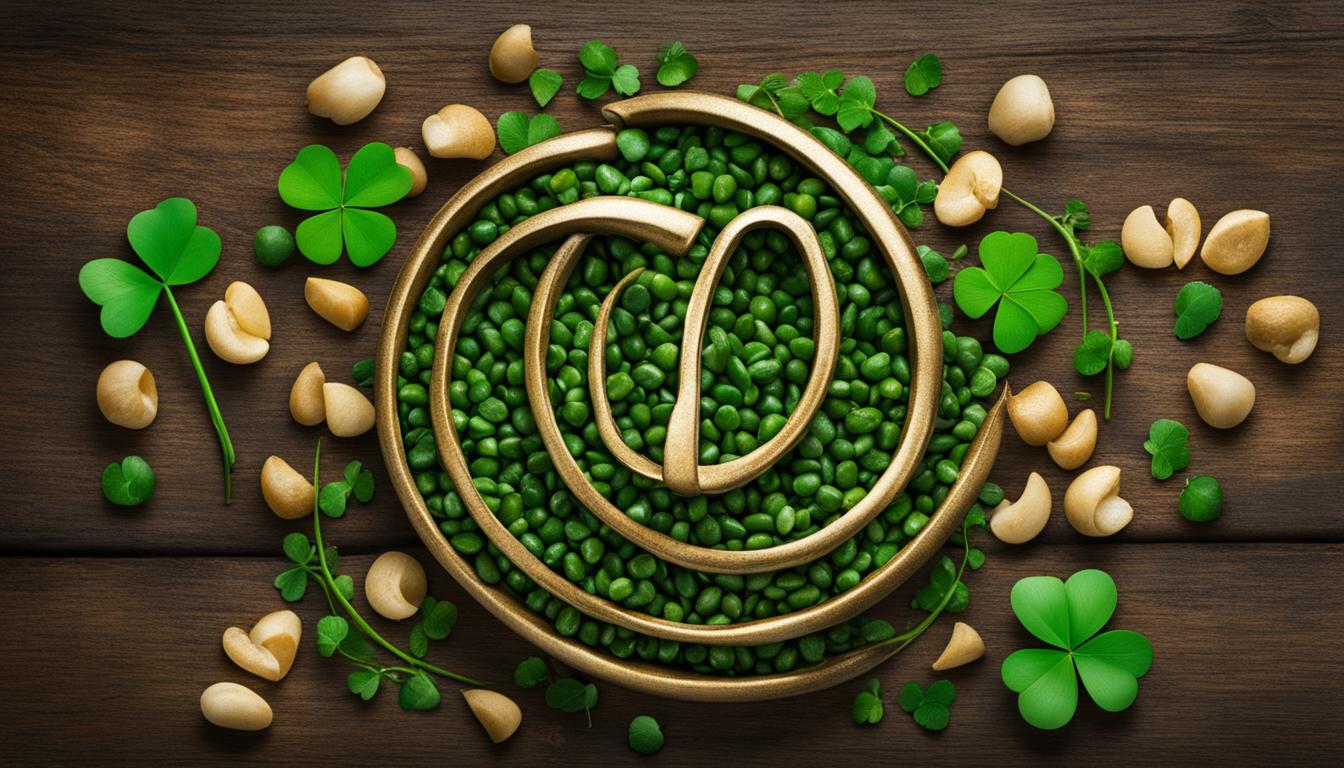In Southern folklore, eating black-eyed peas on New Year’s Day is believed to bring luck and prosperity for the year ahead. The tradition dates back to the Civil War, when black-eyed peas were considered a lowly and overlooked crop. As Union Army troops ignored the fields of black-eyed peas while razing other crops, Confederate soldiers survived on them during a harsh winter. This elevated the status of black-eyed peas as a symbol of fortune in the American South. Today, variations of the tradition include serving black-eyed peas with greens, cornbread, or stewed tomatoes, each representing different elements of wealth and luck. Some even believe that eating at least 365 black-eyed peas on New Year’s Day ensures luck every day of the year.
Contents
- 1 The Origins and Symbolism of Black Eye Peas for New Year’s Luck
- 2 Different Ways to Prepare and Enjoy Black Eye Peas
- 3 The Cultural Significance of Black Eye Peas
- 4 Conclusion
- 5 FAQ
- 5.1 How many black-eyed peas should I eat for good luck?
- 5.2 What is the origin and symbolism of black-eyed peas for New Year’s luck?
- 5.3 How can I prepare and enjoy black-eyed peas?
- 5.4 What are the nutritional benefits of black-eyed peas?
- 5.5 What is the cultural significance of black-eyed peas?
- 5.6 Is there scientific evidence that eating black-eyed peas brings luck?
- 6 Source Links
Key Takeaways:
- Eating black-eyed peas on New Year’s Day is a Southern tradition believed to bring luck and prosperity.
- The tradition dates back to the Civil War when black-eyed peas became a symbol of fortune for Confederate soldiers.
- Variations of the tradition include serving black-eyed peas with greens, cornbread, or stewed tomatoes.
- Eating 365 black-eyed peas on New Year’s Day is believed to ensure luck every day of the year.
- Black-eyed peas have cultural significance and are associated with resilience, hope, and unity.
The Origins and Symbolism of Black Eye Peas for New Year’s Luck
In Southern folklore, the tradition of eating black-eyed peas on New Year’s Day has been passed down for generations. These small legumes are believed to bring luck and prosperity for the year ahead. The origins of this tradition can be traced back to both African and Jewish customs.
In Jewish tradition, black-eyed peas were included in Rosh Hashanah, the Jewish New Year, as a symbol of good luck. The peas were believed to symbolize abundance and fertility, bringing blessings for the coming year. This tradition was brought to the Southern United States by Jewish immigrants, where it merged with the African tradition of eating black-eyed peas for good luck.
During the Civil War, black-eyed peas gained further significance in the South. As Union Army troops ravaged other crops, they left the fields of black-eyed peas untouched. Confederate soldiers survived on these peas during a harsh winter, leading to their association with resilience and luck. The peas were seen as a symbol of hope and prosperity, as they provided sustenance when other food sources were scarce.
“Black-eyed peas are said to resemble coins when cooked and plump up, symbolizing wealth and prosperity.”
The symbolism of black-eyed peas goes beyond their association with luck. When cooked, the peas plump up and resemble coins, symbolizing wealth and prosperity. The tradition also includes serving collard greens, which represent financial prosperity, and cornbread, symbolizing gold. Some even add a penny or dime to their pot of peas, hoping for extra luck to come their way.
Today, the tradition of eating black-eyed peas on New Year’s Day is deeply rooted in Southern culture. It is a way to honor heritage, celebrate resilience, and bring communities together in the hope of a prosperous year ahead.
| Symbolism | Meaning |
|---|---|
| Black-eyed peas | Luck and prosperity |
| Collard greens | Financial prosperity |
| Cornbread | Wealth and abundance |
| Penny or dime | Extra luck |
Different Ways to Prepare and Enjoy Black Eye Peas
Black-eyed peas are a versatile ingredient that can be prepared in various ways to suit different tastes. One popular traditional dish is Hoppin’ John, a flavorful combination of black-eyed peas, rice, and pork. It is often served with a side of greens and cornbread.
If you prefer a lighter option, you can try making Texas (Black-Eyed Pea) Caviar, a delicious dip made with black-eyed peas, Mexican flavors, and fresh vegetables. It can be enjoyed with tortilla chips or as a topping for salads.
Another refreshing dish is Black-Eyed Pea Salad, which features a tangy dressing made with cider vinegar and fresh basil. This side dish is perfect for summer gatherings and pairs well with grilled meats or as a standalone vegetarian option.
When cooking black-eyed peas, start by rinsing them thoroughly, then boil them until tender. You can enhance the flavor by adding ingredients like onions, garlic, celery, bacon, or ham hocks. Black-eyed peas have a nutty, earthy taste with a hint of butteriness that complements a variety of flavors and seasonings.

Table: Nutritional Content of Black Eye Peas (per 1 cup serving)
| Nutrient | Amount |
|---|---|
| Calories | 160 |
| Protein | 11g |
| Fat | 1g |
| Carbohydrates | 31g |
| Fiber | 7g |
| Potassium | 405mg |
| Iron | 4mg |
| Magnesium | 98mg |
| Zinc | 2mg |
| Folate | 358mcg |
As you can see, black-eyed peas offer a wide range of nutritional benefits, making them a valuable addition to any balanced diet. Whether you enjoy them as part of a traditional New Year’s Day meal or incorporate them into your weekly menu, you can feel good about serving black-eyed peas to your family and friends.
The Cultural Significance of Black Eye Peas
Black-eyed peas have a rich cultural significance beyond their association with luck. They have been cultivated in China and India since ancient times and were eaten by the ancient Greeks and Romans. Enslaved Africans brought black-eyed peas to the West Indies and the Lowcountry coastal regions in the Carolinas and Georgia over 300 years ago. Today, the tradition of eating black-eyed peas on New Year’s Day is deeply rooted in Southern culture and is considered a symbol of resilience, hope, and unity, as well as a way to honor African and Jewish heritage.
The tradition of eating black-eyed peas for luck on New Year’s Day has been passed down through generations, connecting communities and preserving cultural identity. It serves as a reminder of the hardships faced by those who came before and the strength and perseverance needed to overcome challenges. The act of coming together to share a meal of black-eyed peas fosters a sense of unity and solidarity, as friends and family gather to celebrate the start of the new year.
Black-eyed peas have become a cultural touchstone, representing not only luck and prosperity but also the values of tradition, heritage, and community. The act of preparing and consuming black-eyed peas is a way to pay homage to the past, celebrate the present, and look forward to the future. It is a tradition that binds people together and brings a sense of comfort and hope for the year ahead.

Significance of Black-Eyed Peas in African and Jewish Heritage
“The tradition of eating black-eyed peas on New Year’s Day is deeply rooted in Southern culture and is considered a symbol of resilience, hope, and unity, as well as a way to honor African and Jewish heritage.”
Celebrating Resilience and Unity
- Black-eyed peas represent a connection to the struggles and triumphs of the past, serving as a reminder of the resilience and strength of previous generations.
- Sharing a meal of black-eyed peas on New Year’s Day brings friends and family together, fostering a sense of unity and togetherness.
- The tradition of eating black-eyed peas is an opportunity to celebrate cultural heritage and honor the traditions that have been passed down through generations.
A Symbol of Hope and Prosperity
- Black-eyed peas are believed to bring luck and prosperity for the year ahead, symbolizing abundance and good fortune.
- The act of consuming black-eyed peas on New Year’s Day is a way to set positive intentions and invite blessings into one’s life.
- By incorporating black-eyed peas into their celebrations, individuals embrace the hope and optimism that the new year brings.
| Cultural Significance of Black-Eyed Peas | |
|---|---|
| Symbol of Resilience | Representing the strength and endurance of previous generations |
| Unity and Togetherness | Bringing friends and family together to share a meal |
| Celebrating Heritage | Honoring African and Jewish traditions |
| Hope and Prosperity | Believed to bring luck and abundance for the year ahead |
Conclusion
Whether you’re a believer in superstitions or simply appreciate cultural traditions, incorporating the custom of eating black-eyed peas on New Year’s Day can add a touch of luck and prosperity to the start of your year. This cherished tradition, deeply rooted in Southern culture, holds a special place in the hearts of many.
From its historical origins during the Civil War to the symbolic significance of the peas, this New Year’s tradition brings communities together, celebrating resilience and hope. Regardless of whether you enjoy the nutty flavor of black-eyed peas or simply embrace the cultural heritage, the act of sharing this meal can foster unity and a sense of belonging.
So, as you plan your New Year’s Day festivities, consider giving black-eyed peas a place on your menu. Whether you choose to prepare them in a traditional dish like Hoppin’ John or explore new recipes, you’ll be partaking in a rich tradition and honoring the legacy of those who came before us. So dig in and let the flavors of luck and prosperity accompany you throughout the year.
FAQ
How many black-eyed peas should I eat for good luck?
There is no specific number of black-eyed peas to eat for good luck. The tradition suggests eating at least one black-eyed pea, but some believe that eating at least 365 peas ensures luck every day of the year.
What is the origin and symbolism of black-eyed peas for New Year’s luck?
The tradition of eating black-eyed peas for luck on New Year’s Day originated in the American South during the Civil War. Black-eyed peas were considered a lowly crop and were spared by Union Army troops while other crops were destroyed. Confederate soldiers survived on black-eyed peas during a harsh winter, elevating their status as a symbol of fortune. Today, the peas are believed to resemble coins when cooked and symbolize prosperity and wealth.
How can I prepare and enjoy black-eyed peas?
Black-eyed peas can be prepared in various ways depending on your taste. One traditional dish is Hoppin’ John, combining black-eyed peas, rice, and pork. It is often served with greens and cornbread. Other popular recipes include Texas (Black-Eyed Pea) Caviar, a flavorful dip made with black-eyed peas and Mexican flavors, and Black-Eyed Pea Salad, a side dish made with a cider vinegar and basil dressing. Variations in seasonings can include onions, garlic, celery, bacon, and ham hocks.
What are the nutritional benefits of black-eyed peas?
Black-eyed peas are a nutritious food choice. They are low in fat, contain no cholesterol, and are low in sodium. They are high in potassium, iron, and fiber, making them a healthy addition to any diet. Black-eyed peas are also a good source of protein, vitamins, and minerals.
What is the cultural significance of black-eyed peas?
Black-eyed peas have a rich cultural significance beyond their association with luck. They have been cultivated in China and India since ancient times and were eaten by ancient Greeks and Romans. Enslaved Africans brought black-eyed peas to the West Indies and the Lowcountry coastal regions in the Carolinas and Georgia over 300 years ago. The tradition of eating black-eyed peas on New Year’s Day is deeply rooted in Southern culture and is considered a symbol of resilience, hope, and unity, as well as a way to honor African and Jewish heritage.
Is there scientific evidence that eating black-eyed peas brings luck?
The tradition of eating black-eyed peas for luck is based on folklore and cultural beliefs, rather than scientific evidence. The significance of black-eyed peas as a symbol of luck and prosperity has been passed down through generations and varies among different cultures and regions.





